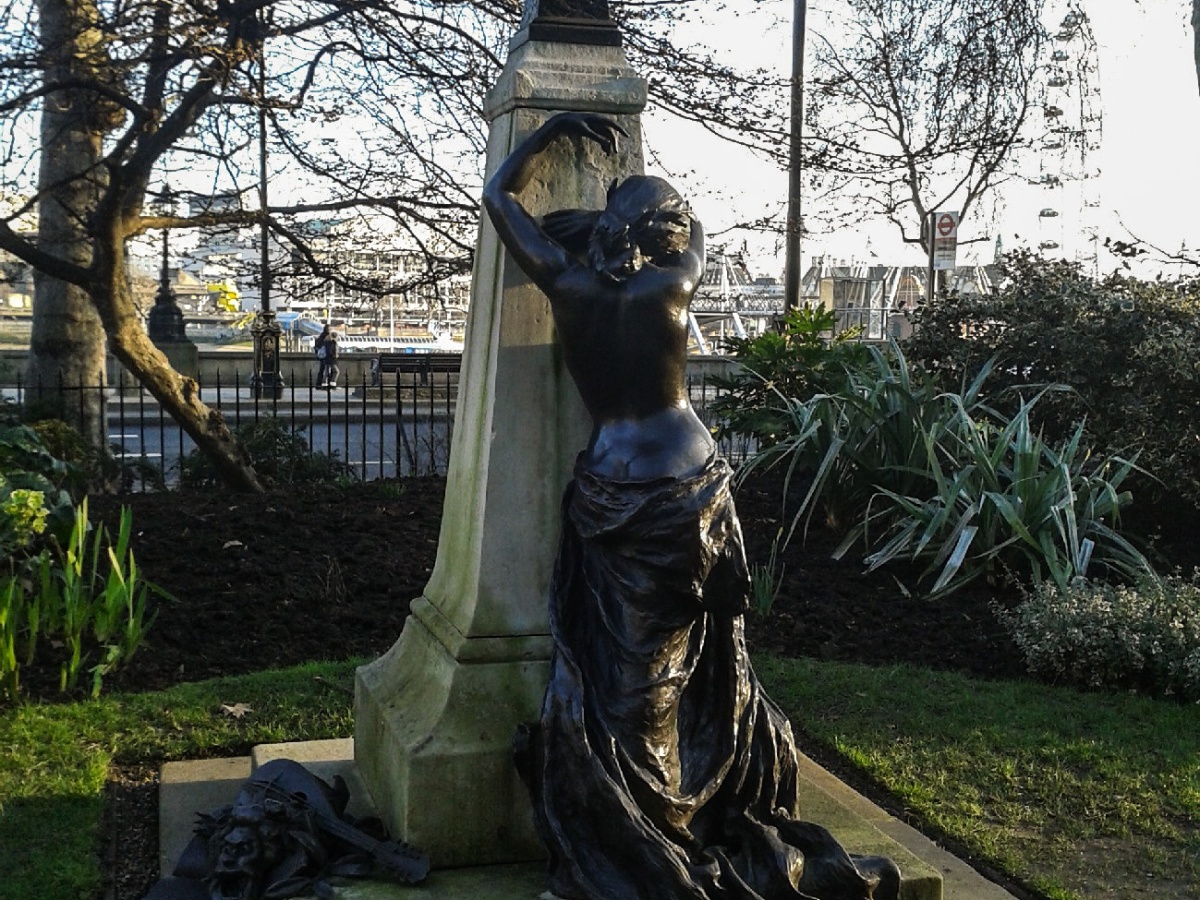Seen a Dolphin in the Thames? Story behind the lamps on the Embankment
The history of the sturgeon lamps by the River Thames.

Lining the Thames: One of George Vulliamy’s ‘dolphin lamps’ on
the Victoria Embankment

Spreading south: Replicas of Vulliamy’s lamps popped up on the Southbank to commemorate the Queen’s Silver Jubilee in 1977
Many capital cities around the world have a river running through them. However, when it comes to the Thames, one thing that makes it so recognisable is the striking Victorian lamps lining the Embankment. The street lighting in question are called the ‘Dolphin lamps’, but appear to be sturgeon fish.
Prior to Victorian times, the Thames was a lot wider in the centre of town, but was slimmed down by the building of the Victoria Embankment on the north side in the late 19th century. Civil engineer Sir Joseph Bazelgette (1819-1891) came up with a scheme to reclaim some 22 acres of marshland and built a new road and sewage system for the rapidly expanding capital. While this transformed the city, it also meant many riverside buildings were demolished, such as York House. Building of the Victoria and Chelsea Embankment meant Londoners had somewhere new to stroll beside the river so of course, some attractive new street lighting would be required.

The face of Neptune on one of the original 19th century lamps

The original lamps were made by Masefield & Co
Step forward George John Vulliamy, (1817-1886) the Superintending Architect of the Metropolitan Board of Works, who created the unique riverside lamps built into the retaining river wall in 1870. Many different designs were submitted, including one by Bazelgette, however Vulliamy’s designs were chosen for the centre of town. The cast-iron lamps featured two sturgeons with their bodies wrapped around the lamp column. Facing the Embankment, the face of Neptune peered out with the year 1870 inscribed underneath him. Vulliamy was said to have been inspired by the dolphin sculptures on the Fontana del Nettuno in Rome’s Piazza del Popolo during his extensive travels around Europe. As well as the lamps, Vulliamy also designed the pedestals and sphinxes for Cleopatra’s Needle – the ancient Egyptian obelisk gifted to London by Egypt in 1819 – and the sphinx and camel benches to complement it along the Victoria Embankment. The 1870 lamps were bronzed by Masefield & Co Founders of Chelsea, with its company name visible on the base of some lamps.
For the rest of the 19th century, these lamps only stood on the Victoria Embankment and part of the Albert Embankment (in between Westminster Bridge and Lambeth Bridge). However, further were added in 1910, 1933 and 1964. In 1977, city authorities created replicas on the rest of Albert Embankment on the South Bank to commemorate the Queen’s Silver Jubilee. Instead of the year underneath Neptune on the Victoria Embankment, ‘EIIR’ was inscribed to mark Queen Elizabeth II.

Fish face: Despite being described as dolphin lamps, they appear to be sturgeon

Iconic: The lamps lit up on a stunning September evening
Follow Metro Girl on Instagram for more insider London photos.
Related articles
For Metro Girl’s other London history blog posts, click here.
Posted on 25 Feb 2013, in Architecture, History, London and tagged 19th century, George John Vulliamy, Joseph Bazalgette, River Thames, street furniture, Victoria Embankment, Victorian. Bookmark the permalink. 16 Comments.






I worked for the Meadow Foundry Company Limited based in Mansfield, Nottinghamshire from 1960 until it’s closure in January 1980. During the middle 1960’s we produced 28 Dolphin lamp posts for an extension to the Thames Embankment followed by a further 2 to accompany the sale to the USA of the old London Bridge. We were contracted to do this work by a London based company Bowes Scott and Western who in turn were acting on behalf of the then London County Council. As you can imagine this was a very prestigious contract for us at the time and as I have recently been documenting my time working with the company I have been trying to find out more about the origins of the lamp posts and in particular how many were made originally and who made them. I do know that the Saracen Foundry of Glasgow made 30 in 1900 and that the Carron Company of Falkirk made another 2 in the 1920’s. Another Mansfield Foundry James Maude also claim to have made them but I can find no evidence to support this claim. I was recently told that the Worcester Foundry Hardy and Padmore were producers too, but again this cannot be substantiated.
I have been in touch with Westminster Archives and have been invited to spend some time with the London Metropolitan Archives to carry out further independent research but as yet have been unable to arrange a time to come down to London to take up their offer.
Given your interest in the subject I did wonder whether you might be able to help with my query in particular who produced the originals and how many (even to know how many currently exist would be a bonus), I did come across an internet entry suggesting that London Foundry Gwynnes produced 1450 originally, however the numbers seem unrealistically high and indeed both the aforementioned archive groups felt so too.
I do hope that you may be able to throw some light on this as I am finding too many blind alleys to explore ! (No puns intended, I’ve just realised how my last sentence might sound).
Hi Allan, sorry for late reply. I saw the original lamps were modelled by sculptor Charles Henry Mabey. I know the Coalbrooke Co cast the other cornucopias and climbing boy lamps further down the Thames, so I wonder if they also cast these ones?
Good luck with your research, sounds really interesting.
Does anyone know how far apart the dolphin lampposts were placed along the Westminster portion of the embankment?
Thanks
Len Bailey